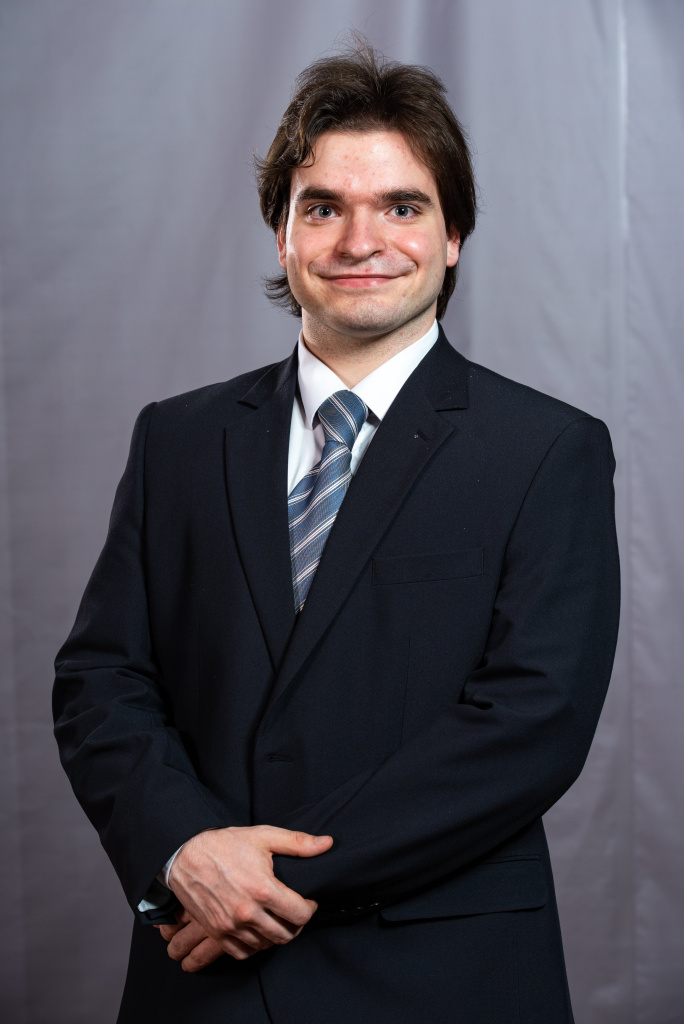 Yury Zgoda
Yury Zgoda
Yury Zgoda, a PhD student at the Faculty of Civil Engineering, has developed a web application for high-performance computer modeling of thin-walled shell structures, OptiShellWeb. A certificate of state registration of the computer program No. 2023682869 was received.
Yury has been working on the topic of high-performance modeling of thin-walled shell structures since 2020. Currently, he has prepared 11 publications on the topic of computer modeling of shell structures, five of which are devoted to neural network modeling. Yury Zgoda is the holder of five certificates of registration of computer programs.
We asked Yury to tell us what shell structures are and how the new web application works.
– A thin-walled shell structure, or shell, is a curved structure in which one of the dimensions (thickness) is significantly smaller than the other two. Shells have a wide variety of geometry, and their curvilinearity provides increased strength and rigidity. Because of this, they are widely used in a variety of fields, including architecture and construction. It is worth noting that shells are currently being actively studied by the scientific community, but the issue of their high-performance modeling remains relatively little studied.
– Do our university also study shells?
– Shells are an integral part of the educational process at SPbGASU and are considered in the relevant disciplines of students of architectural and construction fields. The university has a scientific school “Computer technologies for integrated research of strength, stability and nonlinear vibrations of constructions, buildings and structures”, within which shells are actively studied.
Students of IT specialties majoring in Applied Mathematics and Informatics and Information Systems and Technologies study the development of shell modeling software, including using original approaches of the scientific school.
– What is unique about these approaches?
– When teaching students how to model shells, it is important to provide them with the opportunity to validate their results using a reference solution. Another aspect of teaching is the formation of a spatial representation of shell deformation. It is often difficult for students to imagine how the geometry of the shell is deformed in accordance with the calculation results.
To calculate thin-walled shells, finite element software packages ANSYS and ABAQUS are most often used. However, to use them, students need to have skills in working with the relevant software, which they usually receive as part of certain disciplines. Thus, there is a need to develop an original software solution for shell modeling that provides an easy-to-learn interface for quickly obtaining modeling results for a particular structure.
– Has OptiShellWeb become such a solution?
– The OptiShellWeb web application allows to perform high-performance modeling of the stress-strain state of shells using the Ritz method. It includes vivid visualization tools and an intuitive user interface that allows you to quickly move from a description of the problem under consideration to simulation results.
- One of the main features of the developed solution is high performance. Calculation using this application takes tens of times less time compared to a similar finite element calculation (on average, several tens of seconds). All results are stored in the database, so when a repeat request to calculate the same structure is made, the user receives the results instantly. Additionally, the web application includes documentation detailing the applied mathematical model and numerical methods.
All these factors make it possible to successfully integrate OptiShellWeb into the educational process. In addition, the developed solution can be effectively used in organizations whose activities involve frequent calculations of various shell structures.
– How was the work on the web application going?
– This work was carried out by the SPbGASU scientific school "Computer technologies for complex research of strength, stability and nonlinear vibrations of constructions, buildings and structures", the founder of which is Professor Vladimir Vasilyevich Karpov. The co-author of this program is my supervisor, PhD, Associate Professor at the Department of Information Systems and Technologies Aleksey Aleksandrovich Semenov.
Development was carried out using the Julia programming language, a relatively young language designed for high-performance scientific computing. Julia's focus on scientific computing has significantly simplified the process of developing the computational component of the application. At the same time, the tools required to build the server component of a web application are currently not as developed as those of other programming languages. In this regard, during development, the need regularly arose to study the source code of software libraries, with the use of which the server component was implemented.
– Please share your future plans.
– At the moment, various issues related to the integration of development into the educational process are being considered. This solution significantly simplifies the procedure for checking student work and debugging it, and can also be used to visualize the geometry of the shell. Testing has shown that it can be used not only at the considered discipline, but also at any other discipline at SPbGASU, where it is required to perform computer modeling of shells and study the stress-strain state of these structures.



